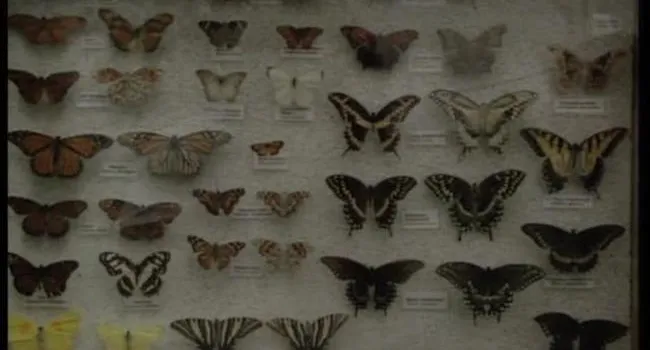Kings Mountain was the site of an important battle of the Revolutionary War. The British were defeated and started a retreat to Yorktown, where they eventually lost the war, giving the 13 colonies their freedom. Near the battlefield site is a 150-year old Living History Farm, which is a replica of a mid-19th century Yeoman Farm. The park interpreter helps communicate the history so we can understand how our ancestors lived.
The homestead consisted of the family home and all the outbuildings necessary for farming and raising livestock (barn, carpenter shop, sorghum mill, cotton gin, etc.). The pioneer family usually consisted of 10 to 15 members.
The family home and other buildings were made with logs that had been hewed or squared, since square beams were easier to join than round logs. To make a square beam, a broad ax with a bent handle was used to chip away the curved sections of a log. The ax was made with different metals to make it more affordable—only the cutting edge was steel. To help with the hewing process, a wooden mallet was used to hit the handle of the ax. The beams were finished more carefully when they were to be used for floors and other lumber. Much patience and hard, slow work was required to make the material needed to build the homestead.
Cooking was done outside whenever possible due to the danger of fires from cooking in the fireplace. A low fire was kept burning and the ashes and coals were for cooking. Dutch ovens are iron containers with a lid. Cornbread and other foods were placed inside and then coals or ashes were placed on the lid and under the container so the food could bake. "S" hooks were used to raise and lower pots over the fire to control the speed of cooking. Hot water was always kept over the fire to use in cooking and cleanup. Ashcakes are cornbread pancakes that can either be placed directly in the ashes to cook or be rolled in cabbage leaves to protect the cornbread before being put in the ashes.
Sugar cane was raised to make syrup called molasses. The sorghum mill crushes the cane and the liquid that comes out is collected and boiled in a big pot over an outdoor fire. A mule that walks round in circles, turning the equipment, powers the sorghum mill.
Standards
- 3-4 The student will demonstrate an understanding of life in the antebellum period, the causes and effects of the Civil War, and the impact of Reconstruction in South Carolina.
- This indicator was written to promote inquiry into the unique development of ethnic, political, and religious identities in the New England, Mid-Atlantic, and Southern colonies.
- 4.1.E Analyze multiple perspectives on the economic, political, and social developments of British North America and South Carolina.
- 4.2.E Analyze multiple perspectives on the economic, political, and social developments of the new nation.
- 8.1.E Utilize a variety of primary and secondary sources to examine multiple perspectives and influences of the economic, political, and social effects of South Carolina’s settlement and colonization on the development of various forms of government across the colonies.
- 8.2.CE Explain the economic, political, and social factors surrounding the American Revolution.




































